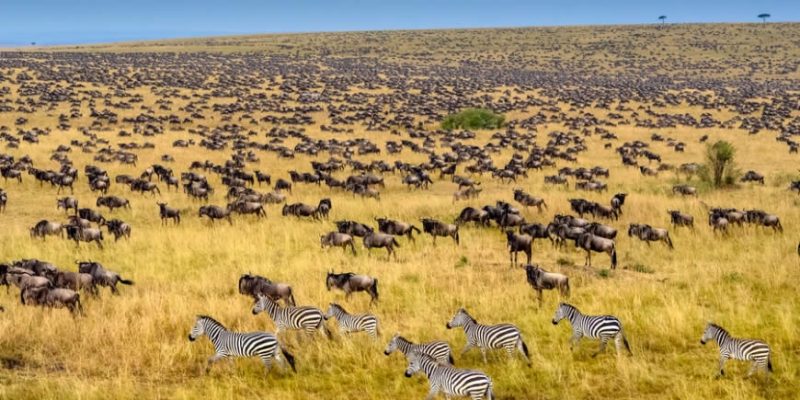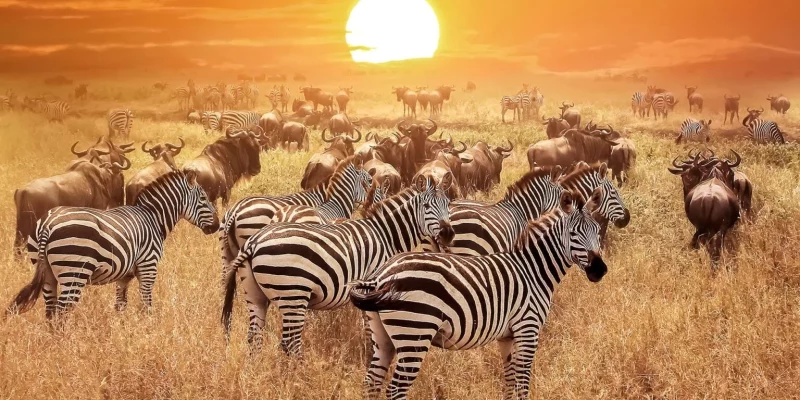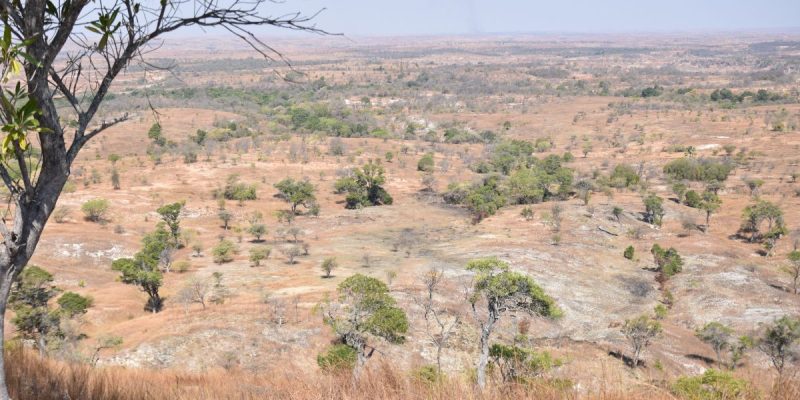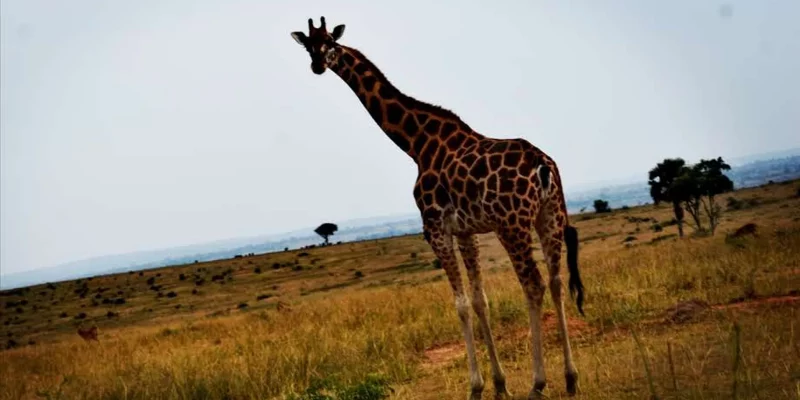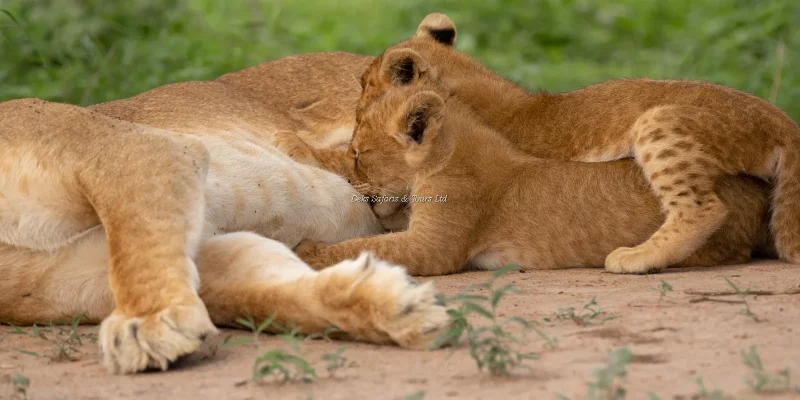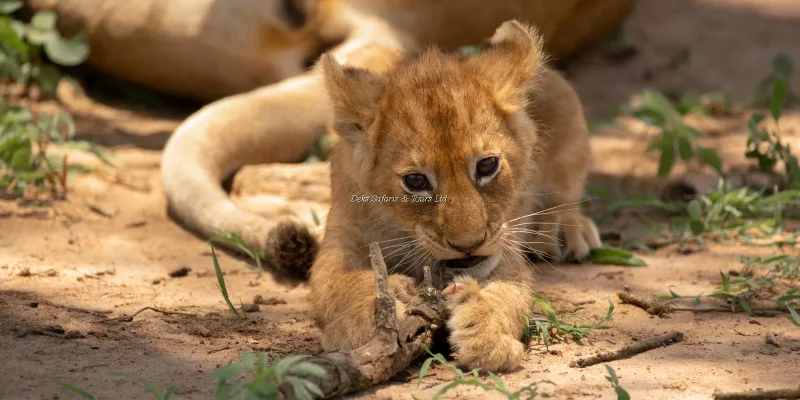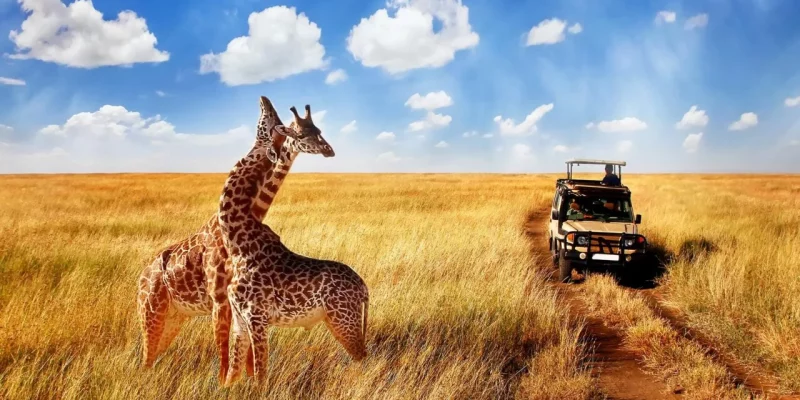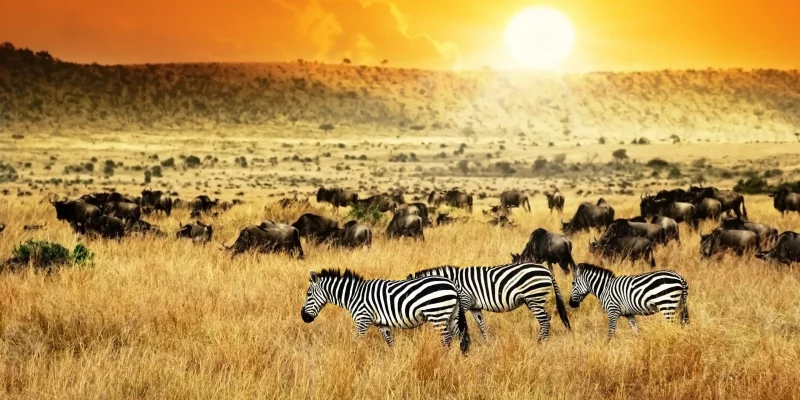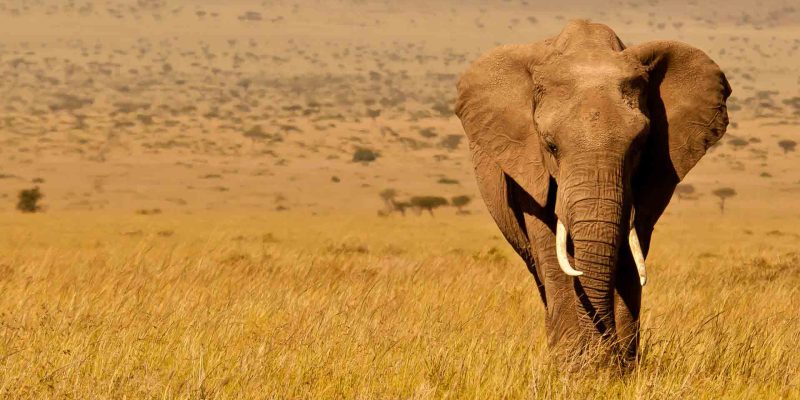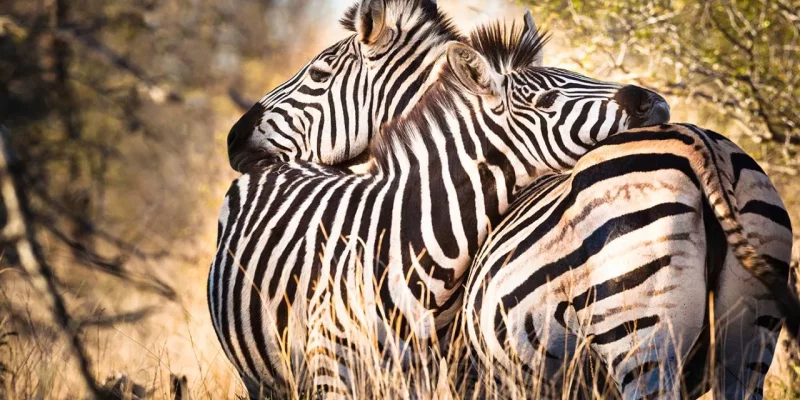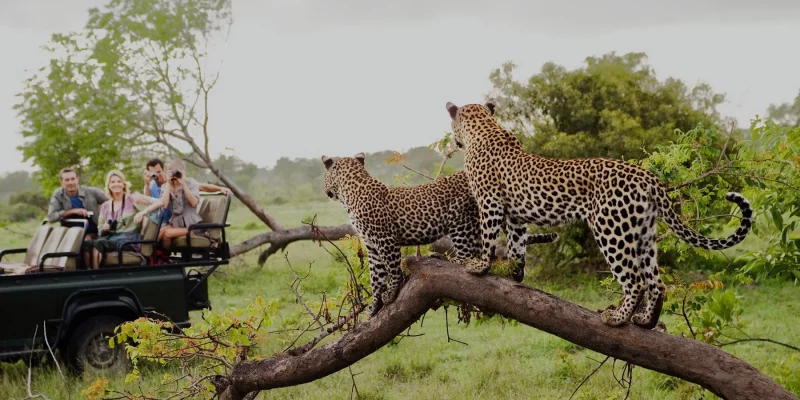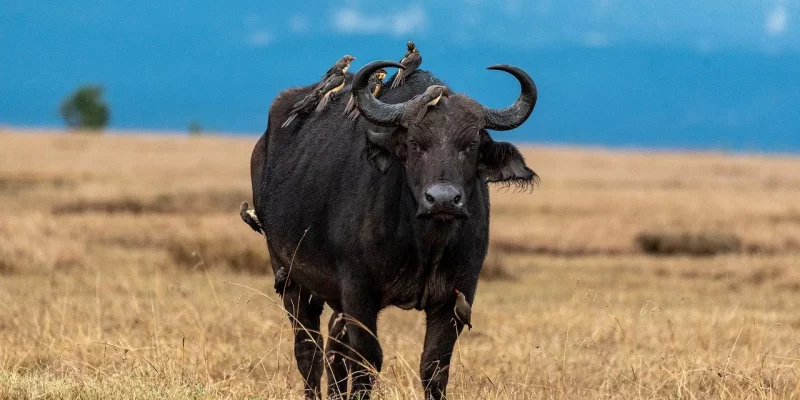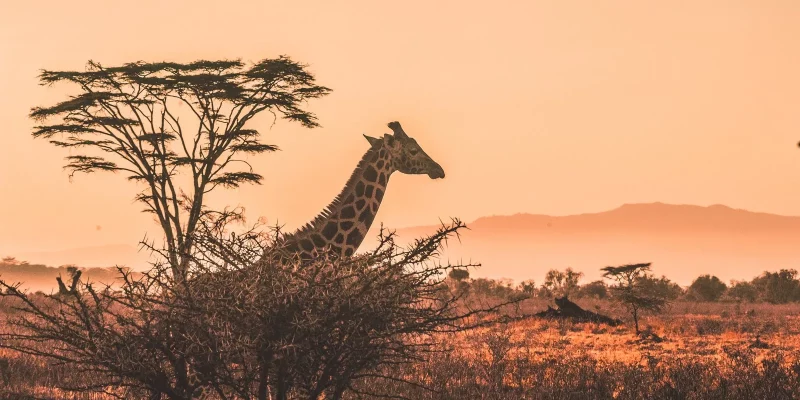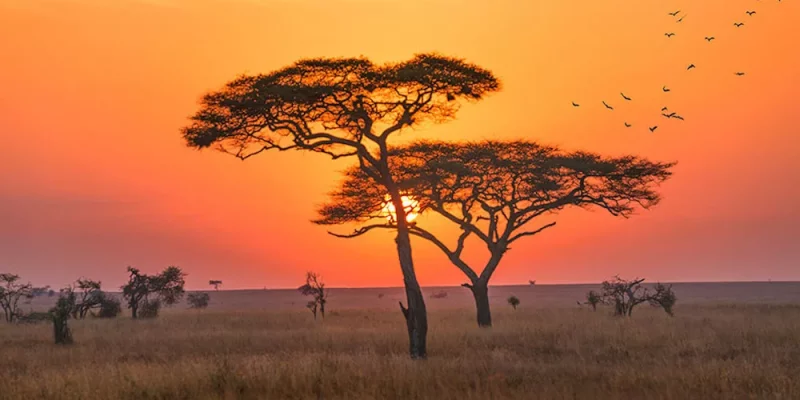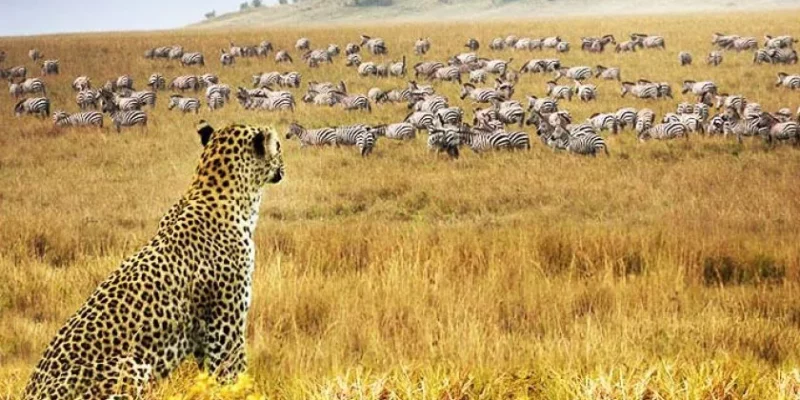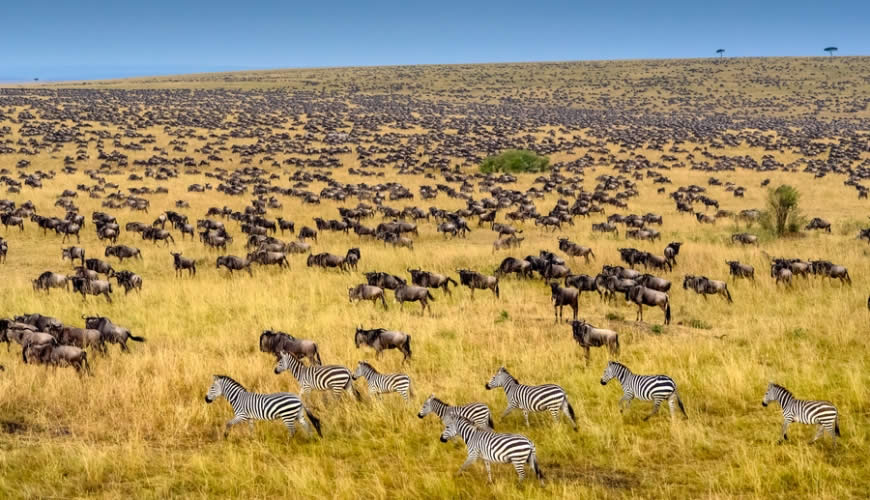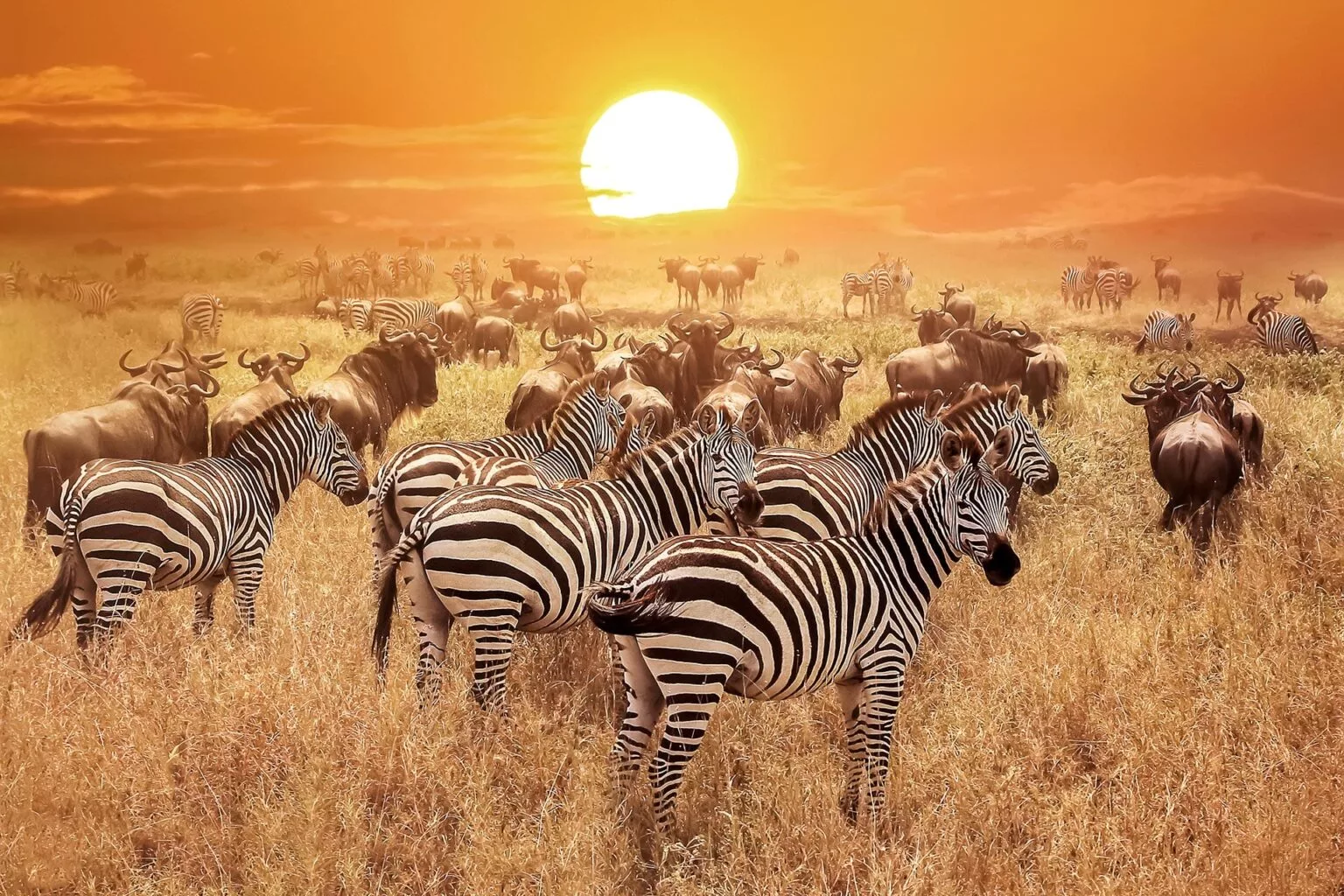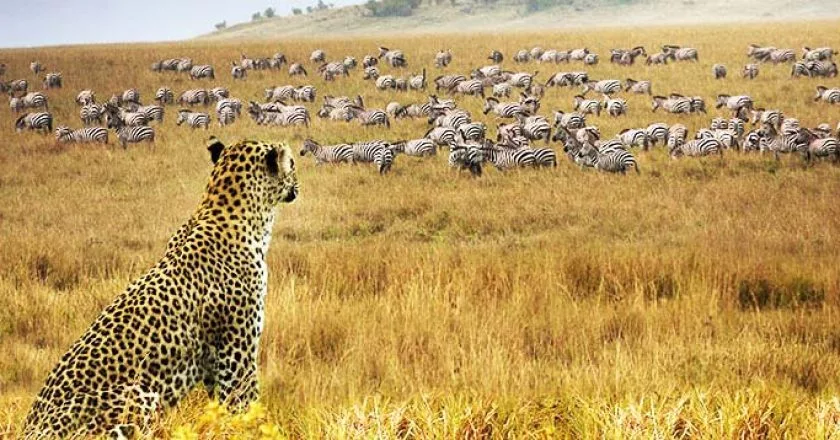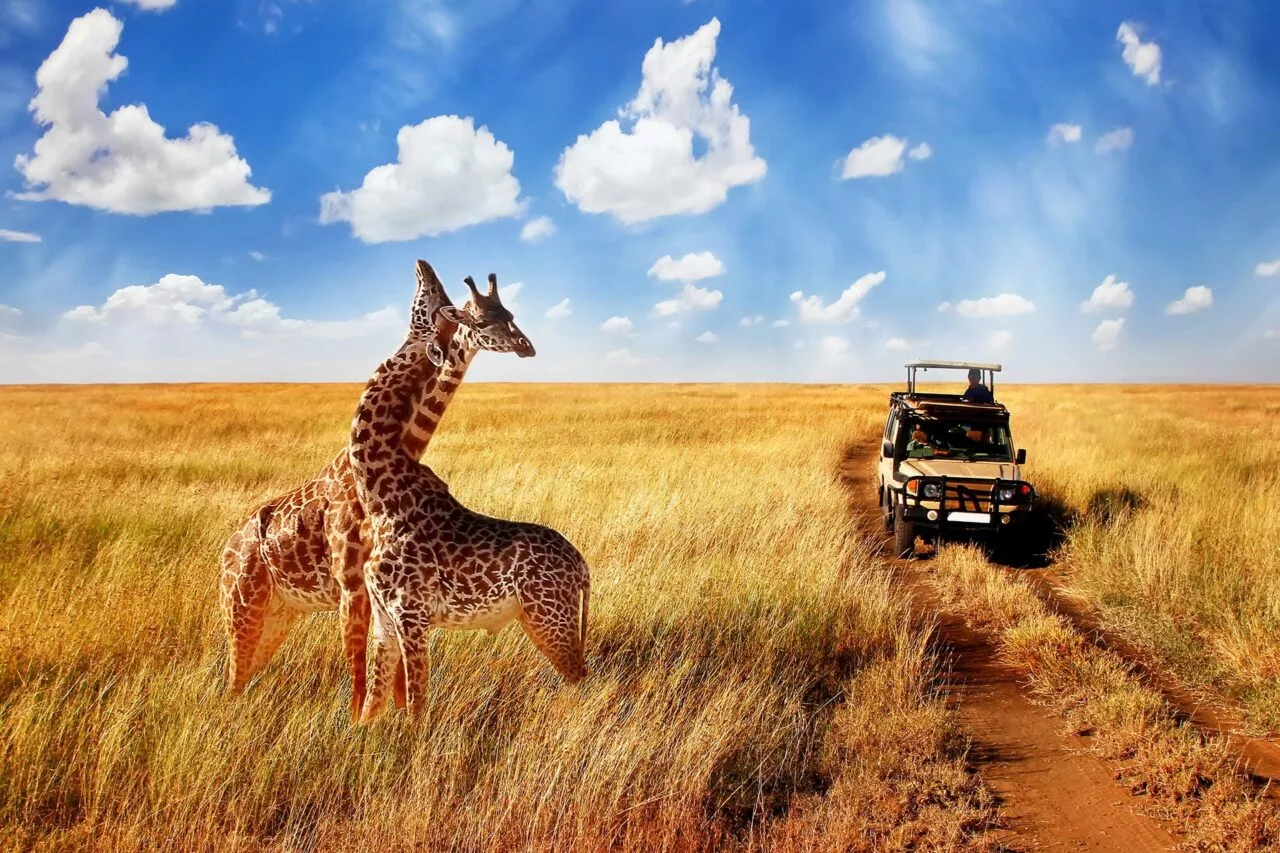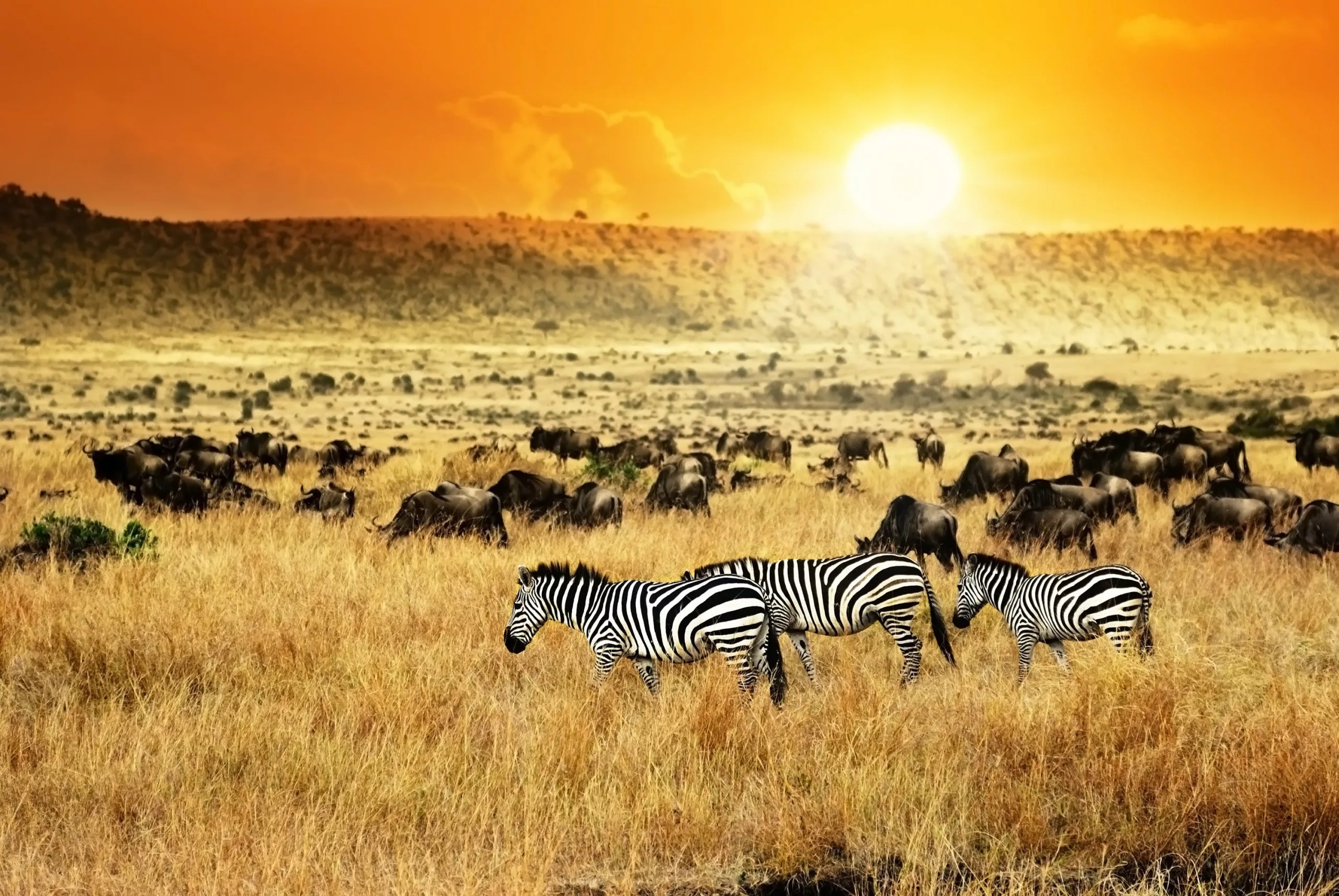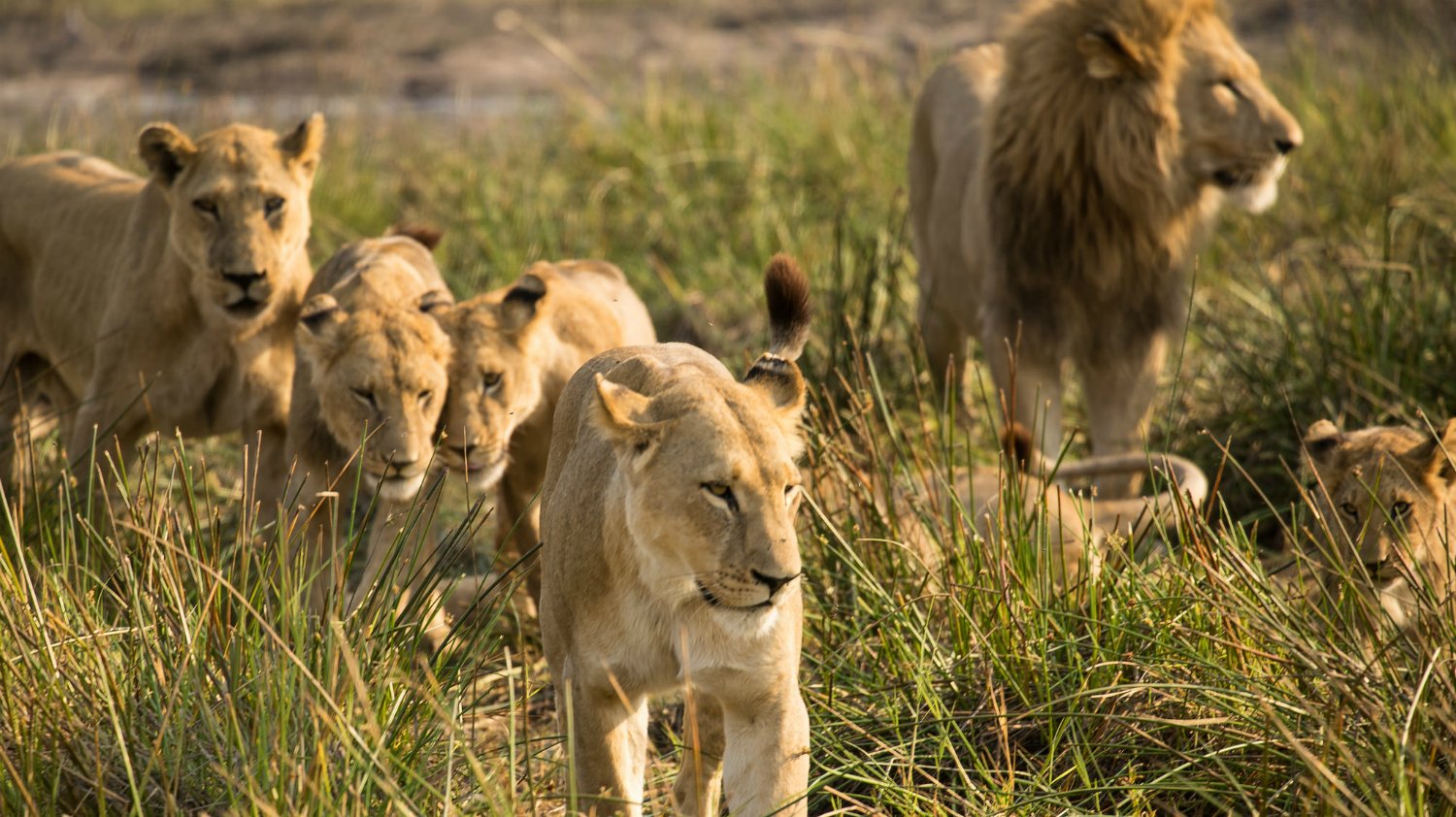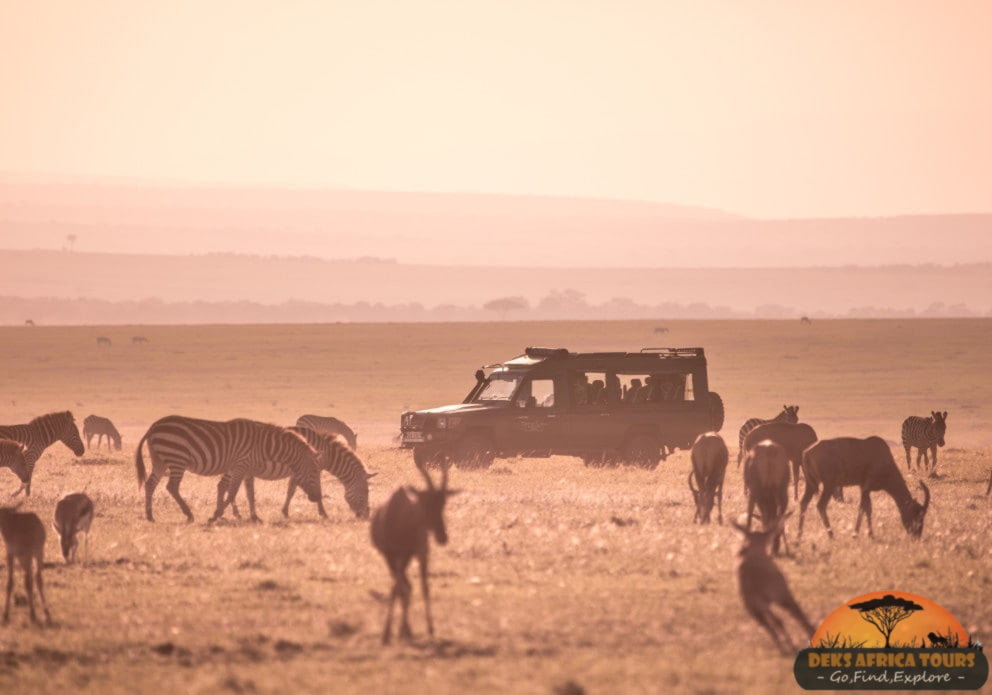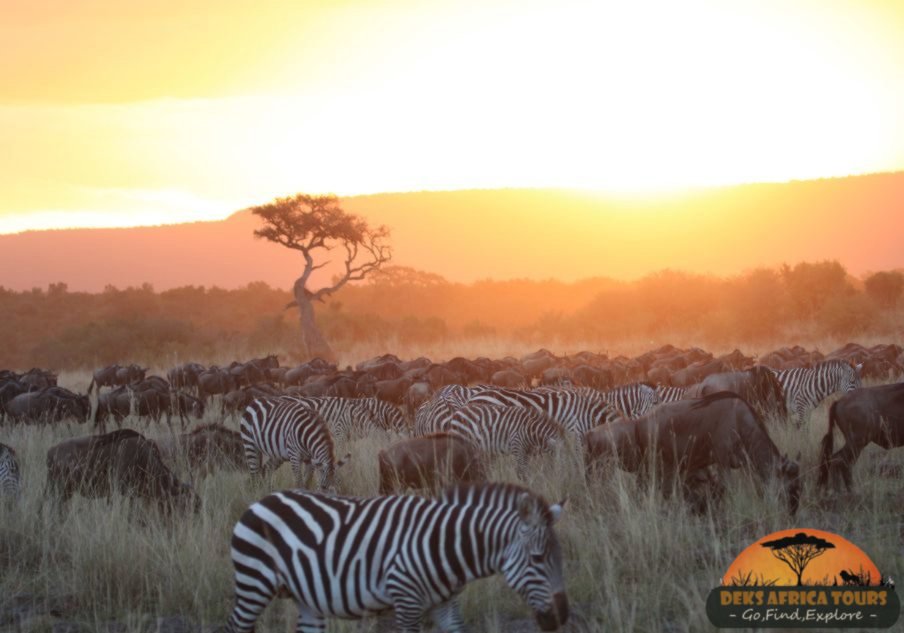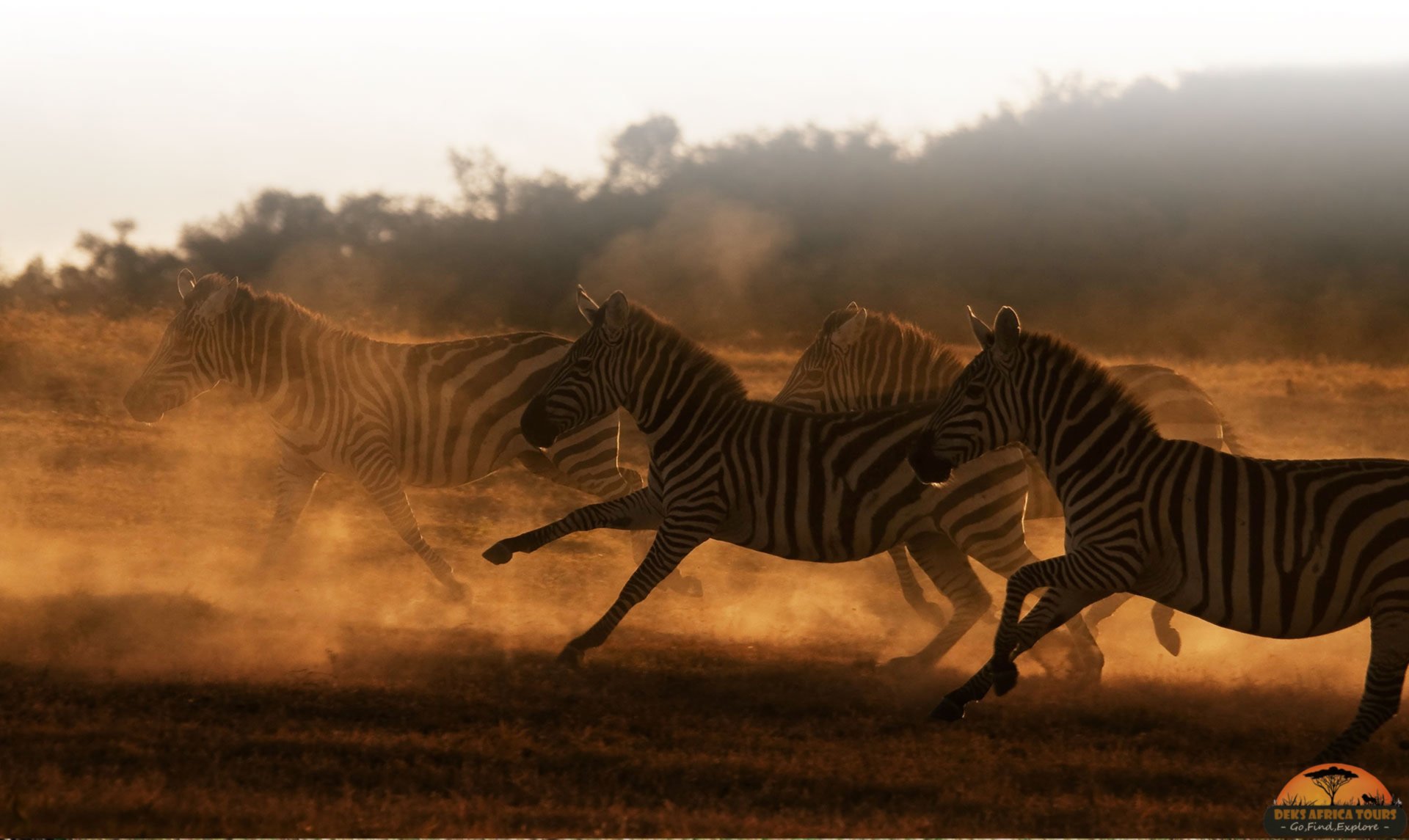Great Wildlife Migration in Africa (Kenya & Tanzania): The Best African Safari
The phenomenon of the Great Wildlife Migration Safari in Africa, also referred to as the Gnu Migration, Serengeti Migration, and Masai Mara Migration, stands as one of the few remaining large-scale terrestrial movements of wildlife on Earth. This migration serves as a primary motivation for numerous travelers who embark on safaris in Kenya and Tanzania, particularly during the middle of the year.
This natural event presents a fascinating paradox: precise timing is crucial, yet it remains unpredictable. While it is certain that wildebeests, accompanied by some zebras and antelopes, will traverse the Mara River, the exact timing remains elusive. Similarly, the migration is triggered by rainfall prompting the animals to seek fresh grazing, yet the timing of the rain is uncertain.
Thankfully, since 2016, we have been organizing Great Wildlife (Wildebeest) Migration Safaris in Africa, assisting numerous travelers in being at the optimal location at the right time and at an affordable cost. If you seek expert guidance in planning your adventure, your search ends here. We have consolidated our specialized insights into this convenient beginner’s guide to experiencing a Great Wildlife (Wildebeest) Migration Safari.
Great Wildlife Migration in Africa Safari Packages & Tours | Book Now
5 Days Masai Mara Kenya Safari
5 Days Masai Mara Kenya Safaris Tour Wildlife Adventure to Masai Mara National Reserve, Lake Nakuru National Park, and Naivasha Budget Medium and Luxury Safari in Kenya.
7 Days Best Kenya Safari Tour
7 Days Best Kenya Safaris Tour four beautiful parks in Kenya. Located at the foot of Mount Kilimanjaro, Africa’s highest peak at 5,895 meters, Amboseli National Park.
5 Days Tanzania Camping Safari
These 5 Days camping safari in Tanzania attracts those who experience its stunning beauty. Four parks are located in Tanzania, an area that has preserved its purity.
6 Days Best Safari in Tanzania
Here are the 6 Days Best Safari in Tanzania in some of Tanzania’s most famous parks. It will give you all the opportunities you want to experience in the park.
8 Days Tanzania Safari Adventure
An iconic 8-day Tanzania safari adventure where you will not only have the opportunity to visit all the parks on the northern Tanzanian safari circuit (including 3 nights.
8 Days Tanzania Safari Tour
Our 8 Days Tanzania Safari, Nature & Culture Tour provides the most comprehensive overview of the country’s parks and culture. You will visit all four of Tanzania’s famous.
8 Days Kenya Discovery Safari
The 8 Days Kenya Discovery Safari covers the best wildlife spots in Kenya. Look out for the large Elephant herds in Amboseli National Park situated on the foothills of Mt. Kilimanjaro. Enjoy the experience of staying in a Treehouse in Mt. Kenya National Park.
8 Days Kenya Discovery Safari
The 8 Days Kenya Discovery Safaris Tour covers the best wildlife spots in Kenya. Look out for the large Elephant herds in Amboseli National Park situated on the foothills of Mt. Kilimanjaro. Enjoy the experience of staying in a Treehouse in Mt. Kenya National Park.
9 Days Classic Kenya Safari
Explore the remote wilds of Samburu, the rolling plains of Masai Mara, and the Natural beauty of Amboseli on a 9 Days Classic Kenya Safari. The 9 Days Classic Kenya Safari tours that covers three of the best safari parks in Kenya.
10 Days Complete Kenya Safari
This 10 Days Complete Kenya Safaris tour takes you through seven of Kenya’s most popular safari destinations, giving you a complete overview of this fascinating country. Each of these seven parks offers something unique.
5 Days Best Kenya Discovery Safari
5 Days Best Kenya Discovery Safari to Kenya’s Hell’s Gate National Park, Lake Nakuru National Park, and Maasai Mara Game Reserve (The Great Migration Adventure).
5 Days Best Uganda Kenya Safari
5 Days Best East Africa Safari Holidays Masai Mara Great Migration Safari & Uganda Gorilla Trekking (Bwindi Impenetrable National Park) Top 5 Wildlife Masai Mara Safari.
6 Days Uganda Kenya Tour
6 Days Uganda Kenya Tour from Kigali City for Ultimate Gorilla Trekking and Great Wildlife Migration Experience. Enjoy this best East African gorilla and wildlife safari as you visit…
7 Days Kenya Safari Trip (Beyond Threshold)
Go off-road on a 7-day Kenya Safari Trip (off-road) and experience the fascinating wildlife and beautiful landscapes of Kenya. Stay 2 nights in Samburu and prepare…
8 Days Tanzania Safari & Zanzibar Holiday
Experience the ultimate 8 Days Tanzania Safari Holiday & Zanzibar Beach Tour with culture, wildlife, and white sand beaches packed into one. Relax in Zanzibar, then explore Africa’s national parks before unwinding on the exotic island’s.
9 Days Tanzania Safari and Zanzibar Holiday
This is a 9 Days Bush to Beach Tanzania Safari and Zanzibar tour to the best of the Northern Park of Tanzania, the Serengeti. The parks are home to small and large animals including birds and reptiles. Afterwards, we go game viewing
14 Days Zanzibar & Tanzania Wildlife Safari
14 Days Midrange Tanzania Wildlife Safari and Zanzibar Beach Holiday. Immerse yourself in the untouched landscapes as you witness wild animals up close, capturing breathtaking photos of Tanzania’s stunning panoramas.
13 Days Tanzania Zanzibar Beach Safari
This is a 13 Days Tanzania Safari Holiday where you will enjoy the bush and Zanzibar with a chance to see the Great Migration and other interesting animals. All this with the assistance of a tour operator based in Arusha. This 13 Days…
12 Days Tanzania Wildlife & Beach Incredible Safari
This 12 Days Tanzania Incredible Safari is designed for those visitors who want to see what Tanzania offers. You will spend time on Tanzania’s mainland and Zanzibar Island. During the safari, you will witness Tanzania’s Great Annual.
11 Days Tanzania Great Migration Safari
This 11 Days Tanzania Safari Holiday is where you will enjoy the bush safari and Zanzibar beach with a chance to see the Big Five and other interesting animals. All this with the assistance of Deks Uganda Safaris in Arusha. This 11 Days…
Complete Guide to a Great Wildlife Migration in Africa Safari
- Can the Migration River Crossings be predicted?
- What Month is the Great Wildlife (Wildebeest) Migration Safari?
- Where Does the Great Wildlife Migration Start?
- Why Do Wildebeest Migrate?
- When is the Best Time to go on a Great Wildlife Migration Safari?
- Where are the Best Places to stay on a Great Wildlife Migration Safari?
- What are the Best Great Wildlife Migration Safari Tours?
- Tips for Planning Your Great Wildlife Migration Safari
Can the Migration River Crossings be predicted?
Predicting the river crossings during the Great Wildlife Migration Safari presents a considerable challenge due to the complex interplay of various factors. While it is understood that the wildebeests, along with other accompanying species, such as zebras and antelopes, will eventually traverse rivers like the Mara River, the exact timing of these crossings remains largely unpredictable. Factors such as weather patterns, availability of fresh grazing on the other side of the river, and the animals’ innate instincts all influence when and where these crossings occur. Despite advancements in technology and increased understanding of animal behavior, pinpointing the precise moment of a river crossing remains elusive, adding an element of excitement and unpredictability to witnessing this natural spectacle.
However, while predicting specific river crossings may be challenging, experienced guides and wildlife experts utilize a combination of historical data, seasonal patterns, and on-the-ground observation to increase the likelihood of witnessing these remarkable events. By carefully monitoring the movements of the herds, understanding the dynamics of river crossings in different regions, and staying attuned to environmental cues, safari operators can offer travelers valuable insights and opportunities to witness this awe-inspiring phenomenon. Ultimately, while nature may not adhere to strict schedules, the thrill of anticipation and the possibility of witnessing a river crossing during the Great Wildlife Migration Safari remain an integral part of the safari experience.
What Month is the Great Wildlife (Wildebeest) Migration Safari?
The Great Wildlife (Wildebeest) Migration Safari is a year-round phenomenon, but the timing of its key events, such as river crossings and mass movements, varies depending on the seasonal patterns and ecological factors. Generally, the migration follows a cyclical pattern, with the wildebeests, zebras, and other herbivores constantly on the move in search of fresh grazing and water. The migration typically begins in the Serengeti National Park of Tanzania around December-January, coinciding with the start of the rainy season in the southern Serengeti, where the wildebeests give birth to their young. As the dry season progresses, usually around June to July, the herds start to move northwards towards the Masai Mara Reserve in Kenya, driven by the need for greener pastures and following the rainfall and fresh growth.
The months of July to October are often regarded as prime viewing times for witnessing the spectacle of the Great Wildlife (Wildebeest) Migration Safari in the Masai Mara, as the herds gather in large numbers, traversing the Mara River and braving crocodile-infested waters. However, it’s important to note that the exact timing of the migration can vary from year to year and is influenced by factors such as rainfall patterns and the availability of food and water sources. Thus, while these months are typically associated with peak migration activity, visitors embarking on safari adventures should consult with experienced guides and wildlife experts to maximize their chances of experiencing this extraordinary natural event firsthand.
Where Does the Great Wildlife Migration Start?
The Great Wildlife Migration Safari typically begins in the southern Serengeti region of Tanzania. This area serves as the breeding ground for the wildebeests, zebras, and other herbivores that participate in the migration. During the calving season, which usually occurs around December to January, thousands of wildebeests give birth to their young in the lush grasslands of the southern Serengeti, taking advantage of the nutritious grazing and water sources available. As the dry season progresses and the grasslands become depleted, the herds start their journey northwards, following the rainfall and seeking greener pastures. This movement marks the beginning of their epic trek towards the Masai Mara Reserve in Kenya, where they will continue their search for food and water in a cyclical pattern that repeats year after year.
Why Do Wildebeest Migrate?
Wildebeests migrate primarily in response to seasonal changes in search of food, water, and suitable breeding grounds. Their migration is a survival strategy that enables them to follow the rains and access fresh grazing pastures. During the dry season, the grasslands become depleted of nutrients and water sources diminish, prompting the wildebeests to move in search of better conditions. As herbivores, they rely on abundant vegetation to sustain themselves and their offspring.
Another crucial factor driving the Great Wildlife (Wildebeest) Migration Safari is reproduction. The wildebeests typically give birth to their young in the southern Serengeti region of Tanzania, where the grass is lush and plentiful during the wet season. By migrating to this area during the calving season, the wildebeests ensure their offspring have access to nutritious food and reduce the risk of predation by predators that are less abundant in this region during this time. Thus, the migration also serves as a means of ensuring the survival and propagation of their species.
When is the Best Time to go on a Great Wildlife Migration Safari?
The best time to go on a Great Wildlife Migration Safari depends on the specific experiences you seek during your journey. Generally, if you’re interested in witnessing the dramatic river crossings, typically characterized by large herds of wildebeests braving crocodile-infested waters, the months of July to October are often considered optimal. During this period, the herds migrate northwards towards the Masai Mara Reserve in Kenya, providing ample opportunities for observing this awe-inspiring spectacle.
On the other hand, if you’re interested in observing the calving season, when thousands of wildebeest give birth to their young in the southern Serengeti region of Tanzania, December to January is the ideal time to visit. This period offers a unique opportunity to witness the circle of life in action as newborn calves take their first steps alongside their mothers amidst the lush grasslands. Ultimately, the best time for a Great Wildlife Migration Safari depends on your personal preferences and the specific aspects of the migration you wish to experience. Consulting with experienced guides and wildlife experts can help tailor your safari experience to align with your interests and maximize your chances of witnessing the incredible phenomena associated with the Great Wildlife Migration Safari.
Where are the Best Places to stay on a Great Wildlife Migration Safari?
The best places to stay on a Great Wildlife Migration Safari depend on your preferences for accommodations, wildlife viewing opportunities, and desired level of comfort. There are various lodges, camps, and accommodations located strategically across the Serengeti National Park in Tanzania and the Masai Mara Reserve in Kenya, offering different experiences for visitors.
In the Serengeti, staying in tented camps or lodges located near the river crossings or in the midst of the vast plains can provide excellent opportunities for wildlife viewing. These accommodations often offer guided game drives and walking safaris led by experienced guides who can help you navigate the landscape and spot wildlife, including wildebeests, zebras, lions, elephants, and more.
Similarly, in the Masai Mara Reserve, staying in luxury tented camps or lodges situated along the Mara River or in prime wildlife viewing areas can offer unforgettable experiences. These accommodations often feature elevated platforms or viewing decks where guests can observe wildlife from a safe distance and witness river crossings during the migration season.
Ultimately, the best places to stay on a Great Wildlife Migration Safari are those that cater to your preferences, budget, and desired level of immersion in the natural environment. Whether you prefer luxury accommodations with all amenities or more rustic tented camps for a closer connection to nature, there are options available to suit every traveler’s needs.
What are the Best Great Wildlife Migration Safari Tours?
The best Great Wildlife Migration Safari tours offer a combination of expert guidance, strategic planning, and immersive wildlife experiences. These tours typically include knowledgeable guides who are well-versed in the behaviors and movements of the migrating herds, enhancing your chances of witnessing key events such as river crossings and predator-prey interactions. Moreover, the best tours often prioritize conservation and sustainable practices, ensuring minimal impact on the natural environment while providing meaningful interactions with wildlife.
Additionally, the best Great Wildlife Migration Safari tours offer a variety of experiences to cater to different interests and preferences. Whether you prefer intimate small-group excursions or larger group adventures, there are tours available to suit every traveler. From luxury tented camps to more rustic accommodations, these tours provide opportunities for guests to immerse themselves in the beauty of the African wilderness and create unforgettable memories amidst the backdrop of the Great Wildlife Migration Safari. By combining expert guidance, immersive experiences, and a commitment to conservation, the best Great Wildlife Migration Safari tours offer travelers the opportunity to witness one of nature’s greatest spectacles in a responsible and respectful manner.
Tips for Planning Your Great Wildlife Migration Safari
Planning a Great Wildlife Migration Safari requires careful consideration and preparation to ensure a memorable and enjoyable experience.
Choose the Right Time: Research the migration patterns and seasonal movements of the wildebeests to determine the best time for your safari. Consider whether you want to witness river crossings, the calving season, or other specific events, and plan your trip accordingly.
Select Reputable Operators: Work with established and reputable safari operators or tour companies with experience in organizing Great Wildlife Migration Safaris. Look for companies with knowledgeable guides, excellent reviews, and a commitment to responsible tourism practices.
Pack Appropriately: Pack lightweight, breathable clothing in neutral colors suitable for warm days and cool nights. Don’t forget essentials like sunscreen, insect repellent, binoculars, and a camera with plenty of memory cards and batteries.
Stay Flexible: Wildlife sightings can be unpredictable, so remain flexible in your itinerary and expectations. Be open to new experiences and opportunities that may arise during your safari.
Consider Extension Activities: Research additional activities and excursions to complement your Great Wildlife Migration Safari, such as hot air balloon rides, cultural visits to local villages, or guided nature walks.
Respect Wildlife and Environment: Remember to respect wildlife and their natural habitats by following park rules and guidelines. Keep a safe distance from animals, refrain from littering, and adhere to responsible wildlife viewing practices.
What Happens every month from January to December?
The Serengeti and Masai Mara’s beautiful scenery and thriving wildlife make them incredibly rewarding safari destinations all year round, even outside migration season. That said, if it’s a Great Wildlife Migration Safari you’re after, here’s a general guide of what tends to happen when:
- October to December
- January and February
- March and April
- May and June
- July and August
- September and October
- The Greatest Show on Earth
A complete guide to the Great Wildlife Migration Safari
October to December
From October to December, the onset of the short rains prompts the migration of the wildebeest southward. Motivated by the perpetual quest for fresh grazing lands, they depart from Kenya’s Masai Mara and traverse into Tanzania’s Serengeti. It’s important not to overlook the enriching experience of embarking on a safari in the Masai Mara during the short rains. The dramatic afternoon thunderstorms often offer remarkable opportunities for photography, accompanied by the arrival of migratory birds in abundance and plentiful game-viewing chances with the resident wildlife, all without the crowds typical of peak season.
Although you may still encounter some stragglers in the Mara by December, the majority of the migratory wildebeest have by then inundated the expansive plains of central and eastern Serengeti in significant numbers as they continue their journey southward.
January and February
In January and February, the Southern Serengeti and Ndutu Region in Tanzania emerge as prime destinations. This period boasts some of the warmest temperatures, with daytime highs reaching around 30°C. Nestled between the short and long rains, it offers an excellent opportunity to witness thrilling predator encounters.
During this time, the wildebeest gather in large numbers on the verdant plains of the southern Serengeti and the Ndutu region within the Ngorongoro Conservation Area. Here, approximately 80% of the females in the herd give birth to over 8,000 wildebeest calves daily within a condensed two- to three-week timeframe. This sudden abundance of vulnerable prey attracts a variety of predators, including the Serengeti’s iconic big cats, roaming packs of African wild dogs, resident hyena clans, and occasional opportunistic jackals. These gatherings provide safari enthusiasts with captivating, action-filled game-viewing opportunities.
For those seeking to witness the miracle of wildebeest births or encounter calves just hours old, the optimal time is typically around noon when many predators seek shelter from the intense midday sun. This natural timing allows newborn calves to gain their footing and strength before the late afternoon, when predators commonly begin their hunt.
March and April
In March or April, after only a few minutes of learning to stand, wildebeest newborns require a couple of weeks to gain the strength necessary to join the herds on the next tumultuous leg of their journey. This phase typically commences amidst the noisy and chaotic atmosphere of the southwest Serengeti National Park.
As the long rains typically descend during March or April, they propel the herds in a northwesterly direction. Due to the heavy rainfall, many camps in southern Tanzania shut down as the roads become slick and the terrain challenging to traverse, even with a 4×4 vehicle.
Despite the inclement weather, some safari lodges remain open as April and May still offer favorable safari conditions. With reduced room rates and fewer visitors, this period becomes an appealing time for safari enthusiasts. Moreover, the dramatic thunderclouds and stunning sunsets create an ideal backdrop for photographers. Additionally, the long rains mark the beginning of the wildebeest rutting season, characterized by bulls fueled by testosterone engaging in noisy and sometimes surprisingly violent battles for mating rights. These displays of dominance persist well into the month of May.
May and June
As the long rains persist into May, the pace of the Great Wildlife (Wildebeest) Migration Safari begins to accelerate, facilitated by the increasing age and strength of the calves. Massive columns stretching up to 40 kilometers (25 miles) in length, comprising wildebeest, zebra, and occasionally Thomson’s and Grant’s gazelles, move northward through the central Serengeti, bringing them closer to their next significant obstacle: the Grumeti River.
While the Grumeti River can indeed offer some heart-pounding wildlife encounters, opportunities for viewing are relatively fewer compared to the more spectacular Mara River crossings. Unlike the Mara River, the Grumeti River contains less water, allowing the wildebeest to traverse it at various points, making it incredibly challenging to anticipate where the crossings might occur.
In June, the conclusion of the long rains signals the onset of the peak safari season in Tanzania. Areas such as Seronera, Grumeti Reserve, and the northern Serengeti experience a surge in visitors eager to witness the migratory herds as they continue their journey northward. The timing of the Great Wildlife Migration Safari varies from year to year and hinges on rainfall patterns. Mobile safari camps, which move alongside the herds, present an excellent option for those seeking proximity to the Great Wildlife Migration.
July and August
In July, the onset of the southern hemisphere winter brings sunshine, clear skies, and pleasant daytime temperatures averaging around 26°C to East Africa. However, it’s advisable to pack some warm clothing as July marks the Serengeti’s driest month but also its coolest. Early morning and evening game drives can feel brisk, with temperatures often dipping to 14°C or lower if not adequately dressed.
After navigating the dangers of the Grumeti River in the northwest of Serengeti National Park, the wildebeest now confront their most formidable challenge: the perilous Mara River crossing in the Northern Serengeti, before proceeding into Kenya’s Masai Mara.
Observing the frenzied chaos of a Mara River crossing stands as one of East Africa’s most breathtaking safari experiences. Thousands of wildebeest and zebra brave the hazardous waters, facing threats from massive Nile crocodiles, drowning in the frantic scramble to reach the opposite bank, or falling prey to predators lurking along the riverbanks.
Predicting a river crossing remains highly unpredictable, despite historical crossing areas. To maximize your chances of witnessing this spectacle on your Great Wildebeest Great Wildlife Migration Safari, it’s recommended to book accommodation at a safari lodge reasonably close to the Mara River. Lodges farther away may require longer travel distances to reach the crossing points, potentially resulting in missed viewing opportunities due to crowded lookout points. Keep in mind that lodges with convenient access to the river tend to fill up quickly, so planning your Great Wildlife Migration Safari at least a year in advance is advisable.
River crossings typically commence in late July in northern Tanzania and extend through September, sometimes even into early October in the Mara. July to September represents the peak season for Great Wildlife Migration Safaris.
September and October
In September, vast herds of wildebeest can be observed grazing their way through Kenya’s Maasai Mara National Reserve. By October, with the onset of the short rains, they are prepared to commence their migration back down into the Serengeti, thus restarting the cycle. August and September emerge as exceptionally busy months in the Mara, characterized by fantastic weather with minimal rainfall and optimal dry season game viewing conditions, facilitating easy wildlife spotting. Notably, this period also features the dramatic river crossings, albeit accompanied by crowds and premium rates at safari lodges.
For those seeking a more intimate safari experience away from the masses, staying at one of the private conservancies bordering the Maasai Mara National Reserve is recommended. From these conservancies, visitors can embark on day trips into the Mara to witness the herds and, with luck, witness a river crossing, all while enjoying uncrowded game drives back at camp. Another strategy to avoid the crowds is to visit the Mara outside of the migration season in October or November, during the short rains. While this may mean missing out on the spectacle of a river crossing, it offers the advantage of reduced accommodation costs and the opportunity for exclusive wildlife sightings without the crowds.
The Greatest Show on Earth
Often dubbed “The Greatest Show on Earth,” the annual mass migration of millions of wildebeest and countless zebra across the vast plains of East Africa is truly awe-inspiring. While wildlife footage of a river crossing may provide a glimpse, nothing can truly prepare you for the sheer magnitude of the unfolding drama firsthand.
The scene is characterized by the thunderous sound of hooves pounding the ground and water churned by frantic movement. Witnessing hoards of wildebeest urgently navigating through the water to reach dry land on the opposite bank is a sight to behold. However, the perilous presence of lurking crocodiles and concealed big cats adds a palpable sense of danger to the spectacle.
Equally captivating is the bittersweet wonder of calving season in February, particularly on the southern plains of the Serengeti and Ndutu region in Tanzania. Here, the sight of newborn wildebeest calves struggling to stand on unsteady legs is met with the harsh reality of lions lying in wait, poised to seize any opportunity for survival.
Having had the privilege of witnessing this unparalleled experience, we can confidently assert that a Serengeti or Masai Mara Great Wildlife Migration Safari should undoubtedly be on everyone’s bucket list. Now that you understand the multifaceted nature of the Great Wildlife Migration Safari, with its reliance on the rains guiding the animals’ movements, choosing when and where to embark on a safari depends on which aspects of this remarkable phenomenon you wish to witness.


